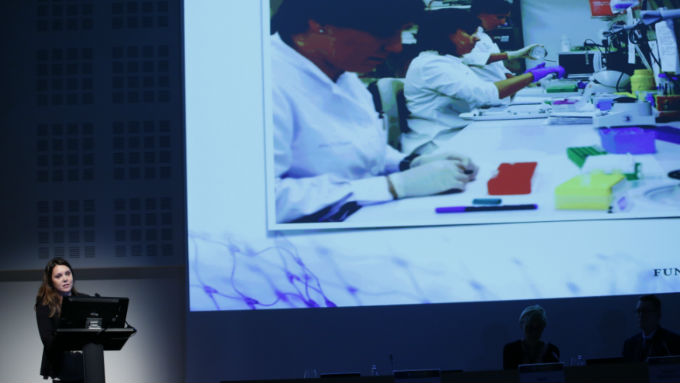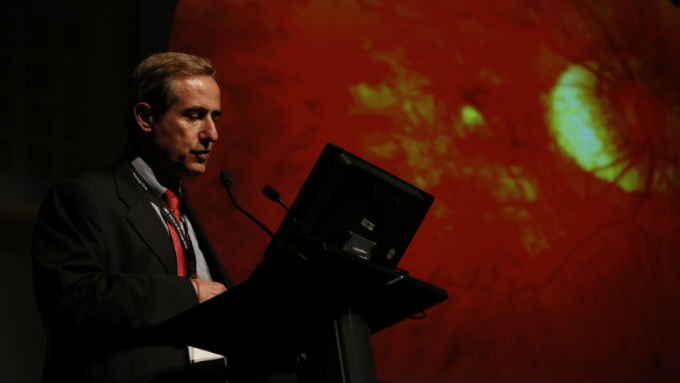The third edition of the Trends in Surgical and Medical Retina meeting, a leading international event directed by Dr Borja Corcóstegui, managed to attract to IMO 350 ophthalmologists from different countries to share the latest developments in the field at a time that they all agreed was a “decisive moment”.
As Dr Carlos Mateo, a member of the organising committee of the conference, explains, “the goal is to ensure that more and more patients retain useful vision – a challenge that arises as a result of increased life expectancy”. Retinal diseases, such as age-related macular degeneration (AMD), are among the leading causes of blindness and are highly prevalent in elderly people.
The main therapeutic hope for the experts gathered at IMO for the meeting was gene therapy, which is currently in the study phase prior to marketing and was presented as the next generation of treatments. To this end, the experts agreed that it was important for patients with hereditary retina diseases, actual candidates for this therapy, to start to undergo studies to identify the genetic defect behind their eye disease.
This way, gene therapy will make it possible to replace the altered gene in the cells of the actual patient, “a strategy that requires an individualised study of every case and whose effectiveness depends on the stage of the disease in which it is applied”, explains Dr Anniken Burés, a co-organiser and speaker at the meeting.
Intraocular injection drugs
This development is getting ready to share the limelight with intraocular drug injections, which, in the last decade, have revolutionised the medical treatment of many retinal diseases, complementing surgery or rendering it unnecessary and, in many cases, improving outcomes.
In the case of patients with AMD, for example, 70% maintain or recover vision with this intraocular therapy, compared to 20% who did so before with other treatments, such as laser, surgery and photodynamic therapy. In addition, these injections have made it possible to reduce the number of retina interventions by about 20%, especially those involving diabetes-related diseases.
However, the current challenge is to use more effective and longer-lasting drugs and formulas that require fewer injections, such as sustained-release treatments. Through a small intervention, a device is placed in the retina which releases the drug over three or four months, instead of every month or so, as is the case with intraocular injections, explains Dr Rafael Navarro, a speaker and also organiser of the meeting.
Cells that manufacture natural drugs
Alongside the development of this device, Phase I studies are being conducted involving the injection into the retina of cells contained in a porous capsule that can be nourished by the liquid in the vitreous cavity and continue living. These cells are genetically modified beforehand to improve their natural ability to secrete a substance that helps the retina to function properly.
“These are cells that manufacture drugs”, explains Dr José García-Arumí, from the organising committee of the meeting, who goes on to say that “if the good initial results are confirmed, it is likely that within some three or four years these therapies will become a reality and succeed in improving the vision of patients, as well as ensuring that they will not need to undergo monthly intraocular injections, as the cells could be effective for over a year.”

